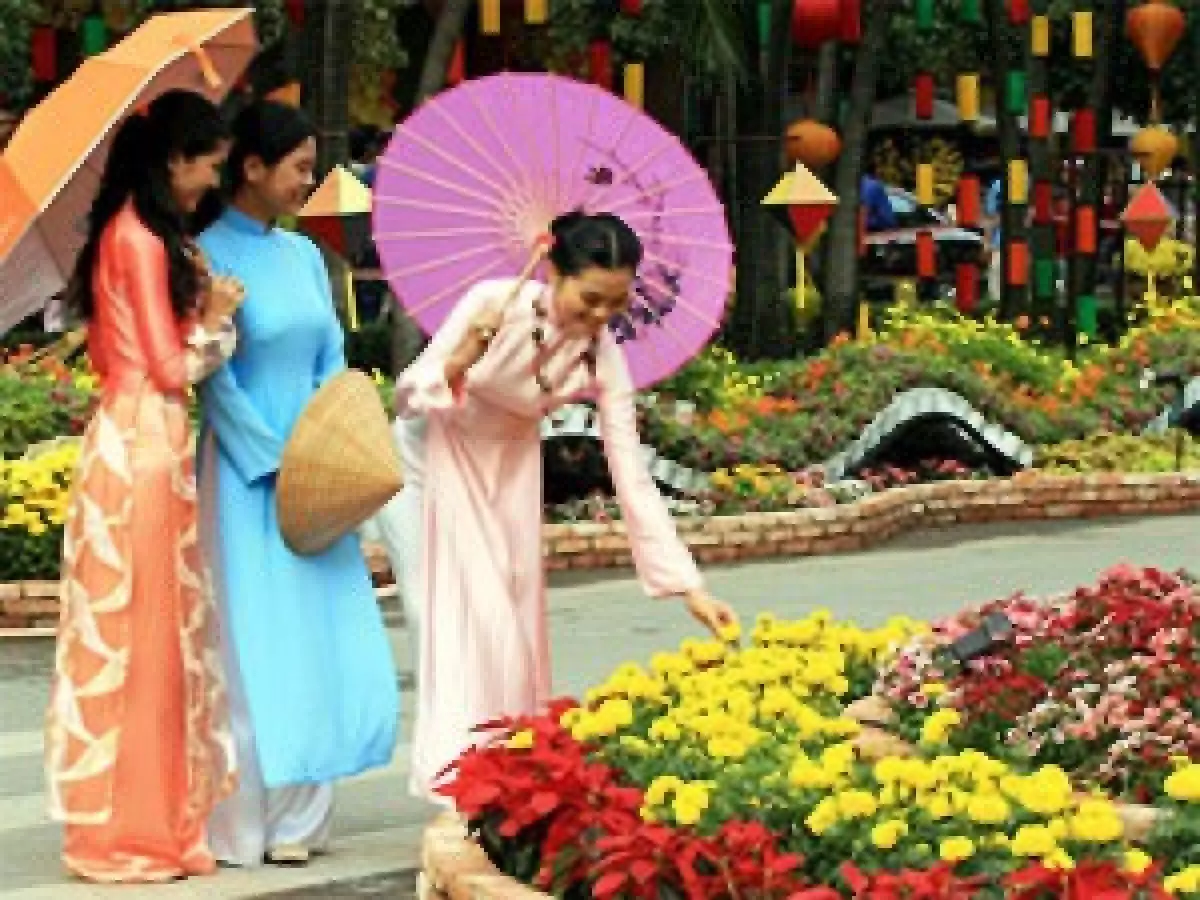 Image Source: shopmrkatin.vn
Image Source: shopmrkatin.vn
The Lunar New Year, known as Tet in Vietnam, is a time for new beginnings and fresh starts. It is a time when people come together to celebrate and embrace their traditions. One of the most iconic aspects of Tet is the traditional tunic called the ao dai. While Western-style outfits may be more practical for daily wear, the ao dai takes center stage during this festive season, adding an air of elegance and formality to the celebrations.
In the past, ao dai tunics were always lined, with two layers of fabric forming a set known as kép. On formal occasions, an additional light ao dai, usually white, was worn as an undergarment underneath the kép, creating a triple set of layers called mớ ba. This was the traditional way of wearing ao dai until a few decades ago. However, as times changed, the ao dai underwent simplification, and the kép layer was eliminated.
Both male and female ao dai were historically cut in a similar fashion, with slight differences in details. The women's ao dai had a slightly higher neck of about two cm, while the men's collar measured 3.5 cm. The wide, down-curved hem, approximately 80 cm across, hung about 10 cm below the knee. The royal ao dai followed the standard cut but featured various colors and materials.
In the past, city women preferred silk brocades and lampas for their ao dai, while the influence of the French introduced velvets in shades of burgundy, dark green, and dark blue. Town women wore five-paneled ao dai, known as nam ta, while women in the countryside adorned front-opening four-panel ao dai called tu than. The rural tu than ao dai were typically made from hemp-based fabrics, often in brown or brownish-fuchsia color.
For the wealthy countryside residents, the tu than ao dai worn during Tet were truly stunning. They featured eight flowing silk strips at the front. The innermost layer included two strips in the color of a lotus flower, measuring about two meters long and 25 cm wide. These strips wrapped around the waist and were tied as a bow at the front. Following this, there were two long ends of a light yellow crepe money belt and a bow and strips made from a soft green silk belt. The two dark brown front flaps of the tunic were lightly tied under those strips to enhance their vibrant colors.
Turning our attention to men's ao dai, the Italian Catholic priest, Father Cristoforo Borri, who traveled through northern Vietnam in the 17th century, wrote about the tradition of northern men wearing black ao dai over other layers on festive occasions. This tradition remained unchanged until recent times.
Traditional ao dai pants for men were moderately wide with a low crotch. Married women traditionally wore black satin pants with their ao dai, while young maidens and men wore white ao dai pants. In Hue, both men and women of all ages wore only white pants. The upper-class residents of Hue added pleats, known as chít-ba, to the outer edges of their pants, creating a flared look when they moved.
Despite the challenges faced throughout history, Vietnam is now flourishing in a time of peace. With the deep pride Vietnamese people have for their culture, it is only a matter of time until visitors can experience an authentic and colorful Tet celebration, complete with the traditional ao dai.
As we explore the world of ao dai, it is worth mentioning that Father Cristoforo Borri documented in his book, "Relations de la Nouvelle Mission des Peres de la Compagnie de Jesus au Royaume de la Cochinchine," the attire worn by men in northern Vietnam. According to his observations, most northern men traditionally wore black ao dai over other layers during festive occasions. This tradition has stood the test of time until recent times.
The traditional ao dai pants for men were moderately wide with a low crotch. Married women would wear black satin pants with their ao dai, while young maidens and men preferred white ao dai pants. However, in the city of Hue, both men and women of all ages exclusively wore white pants. The upper-class residents of Hue added pleats, known as chít-ba, to the outer edges of their pants, creating a graceful flared look as they moved.
Through the ups and downs of history, Vietnam has maintained its rich culture and traditions. With renewed peace and prosperity, it will not be long before visitors can witness a traditional Vietnamese Tet celebration, complete with authentic and colorful ao dai.
Image Source: shopmrkatin.vn
 Caption: Traditional Ao Dai for Lunar New Year celebrations
Caption: Traditional Ao Dai for Lunar New Year celebrations


















